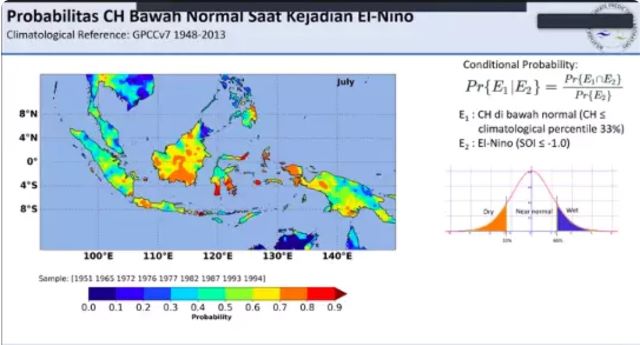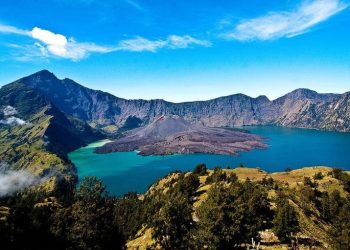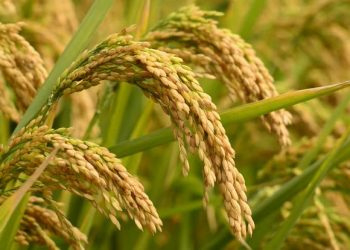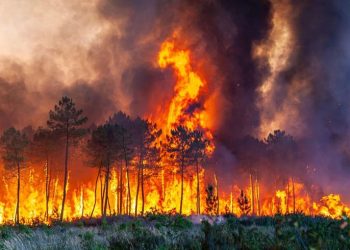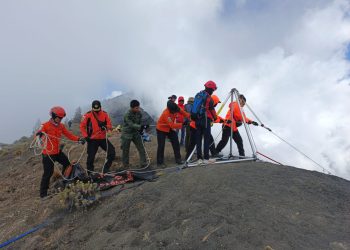Jakarta, Indonesia Sentinel – Geographically, Indonesia is located between the Asian and Australian Continents and the Indian and Pacific Oceans. Air mass exchange and atmospheric and oceanic interactions that occur in the region affect Indonesia’s climate.
One of the global phenomena of atmosphere – ocean interaction that occurs in the Pacific Ocean and becomes a climate driver in Indonesia is El Nino – Southern Oscillation (ENSO).
ENSO is divided into two events, namely the cold phase (La Nina) and the warm phase (El Nino). La Nina and El Nino can cause the dry season and rainy season in Indonesia to be wetter or drier.
“Based on monitoring conducted by the Meteorology, Climatology and Geophysics Agency (BMKG), 9 percent of Indonesia has entered the dry season. After three consecutive years of La Nina phenomenon since 2020, then continuing in 2021 to 2022, BMKG predicts the direction of El Nino which is interesting to study,” said BMKG Acting Deputy for Climatology Ardhasena Sopaheluwakan at the National Climate Expert Forum (NCEF) with the theme El-Nino Prospects 2023 and the Development of the Dry Season in 2023.
The NCEF was held online last Monday (8/5/2023) and presented speakers from BMKG, Bandung Institute of Technology, Bogor Agricultural University, and the National Research and Innovation Agency (BRIN) through the Center for Climate and Atmospheric Research.
Muhammad Ridho Syahputra from the Faculty of Earth Sciences and Technology – ITB said that season prediction is basically quite challenging. “This is because the influence of initial conditions is weak and the influence of boundary conditions is not yet clear,” he explained.
Furthermore, I Putu Santikayasa from the Applied Climatology Postgraduate Study Program – IPB, conveyed the results of research conducted by the team. “Currently, ENSO conditions are in a neutral phase that spreads towards El Nino. There is an increase in SST anomaly in the Nino 3.4 region as a strong indication of El Nino,” he said.
“This condition is reinforced by various observations from OLR, zonal wind anomalies including surface heat accumulation and lower and upper atmospheric conditions. Indications of a stronger dry season in 2023 are also triggered by the predicted value of IOD in the positive phase and also the results of BMKG predictions which state that there is a period of decreased rainfall from normal values,” he said.
Eddy Hermawan, Principal Expert Researcher at the Center for Climate and Atmospheric Research, in his presentation related to El-Nino Prospects and the Development of the 2023 Dry Season conveyed his research based on predictions using the ENSO model.
“Based on the ENSO prediction model from April 2023, it is estimated that the SST Nino 3.4 anomaly leaving the normal (neutral) limit above 0.5 degrees is expected to occur between May, June, July 2023. If the analysis is only based on SST Nino 3.4 data, then we will not know when the dry season in 2023 begins and ends, including its duration so that it can be determined whether this year’s dry season is classified as above, normal or below normal. This critical period occurs in July, August, September 2023,” Eddy explained, as quoted on the BRIN website in Jakarta, Wednesday (10/5/2023).
He said that it is normal that until early May 2023, western Indonesia is still hit by rain, starting from low, medium and even some relatively high areas. “This is not due to the presence of El-Nino Modoki or others. As for the dry season of 2023, it is still relatively normal if examined from its duration, which is only 3-4 months, but it must still be watched out because the intensity it produces is still relatively high,” he explained.
Eddy further said that there is an irregularity where intensive warming has actually started since May 2023, but will decrease in June 2023. This results in the need to re-evaluate the birth of El Nino starting from the period May – June – July 2023. While the period of June, July, August 2023 the birth of El-Nino in BMI, there is a shift of 1 month. With the assumption that if the 2023 dry season occurs interactions that occur between SST Nino 3.4 and IOD, then the July – August – September 2023 period must be watched out for, because it is the hottest period.
“Although it is not indicated that there will be a Wet Drought, the wet season (rainy season) which is relatively long in duration needs to be watched out for. It is necessary to build a prototype that can online display the current condition of SST Nino 3.4 & IOD status in a spatio-temporal format,” said Eddy.
NCEF is an inter-ministerial/institutional meeting forum that is expected to anticipate the impact of droughts that may occur in the future. This strategic forum accommodates input from climatologists about the prospects for trends in climate dynamics, scientific discussions and is closed by making a joint narrative that is convergent to be disseminated to the media and is expected to be a foothold for the central government level in making decisions. (InfoPublik/Photo Source: BRIN Public Relations).


